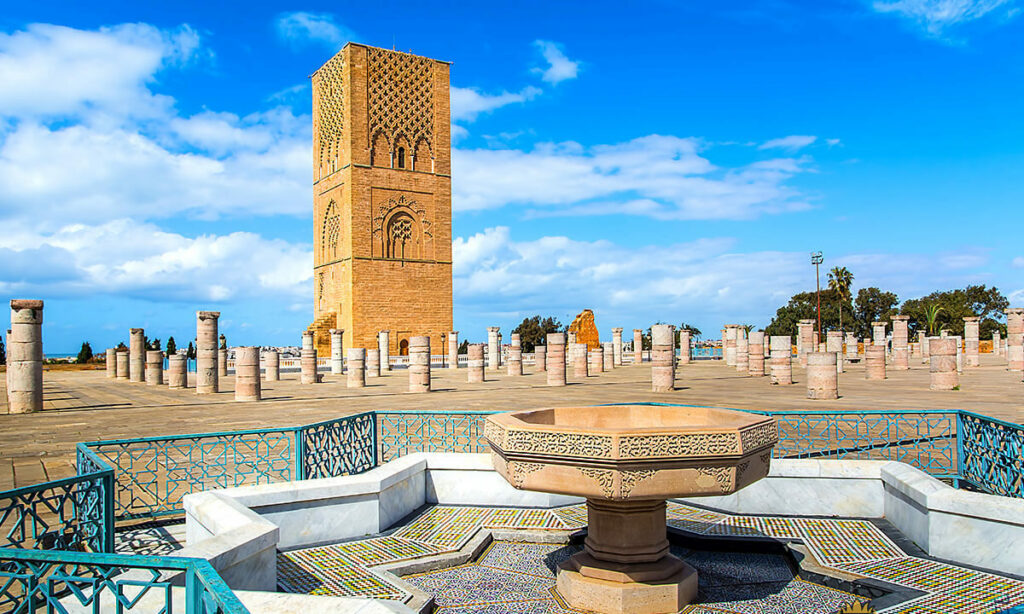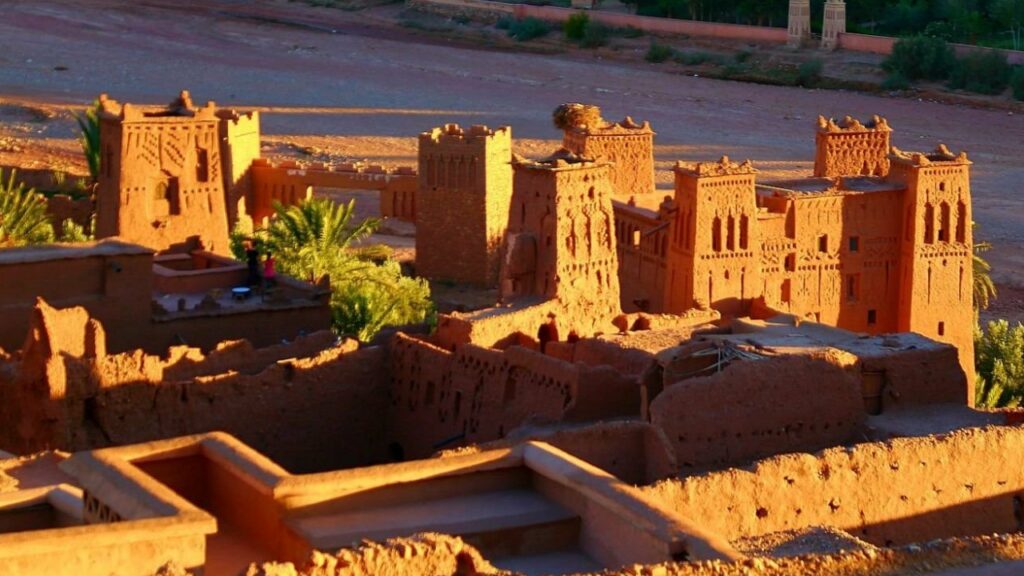Day 1:
Arrival at the airport according to the flight schedule; transfer to the hotel; possibility of taking a walk in the Medina; dinner and overnight at the hotel.
Day 2:
After breakfast, departure for Boumalen Dadès via the Kasbah Ait Ben Haddou, Ouarzazate, and the Mgouna Valley.
Ouarzazate is a city located in the southern part of Morocco, known as the Gateway to the Desert. The city is home to the Atlas Studios, among the largest in the world.
30 kilometers before reaching Ouarzazate from Marrakech, there is Ait Ben Haddou, a kasbah, or fortified city, that seems to have sprung up out of nowhere.
The Mgouna Valley is also known as the Valley of Roses. There are many rose plantations here, which are harvested and processed to produce various cosmetics and rose water. Along the way, there are cooperatives where products can be purchased.
Day 3:
After breakfast, departure for Merzouga via the Tinghir Gorges and Erfoud, with a stop at the Toudra Gorges.
Merzouga is the main gateway to the wonders of Erg Chebbi (a stretch of dunes in southern Morocco) and the ideal starting point for desert treks.
Located between the High Atlas range to the north and the Jebel Sarho range to the south, there is a long valley that follows the calm course of the river. It is an extensive area with rugged gorges, lush oases, verdant palm groves, rural villages, and a succession of imposing fortified kasbahs. Here, you can admire the Toudra Gorges, a majestic fissure that cuts into the mountain, where a crystal-clear river flows, making the entire cultivated valley fertile, and the Dadès Gorges, with steep, sheer rock walls.
Near the Toudra Gorge lies the Tinghir oasis, one of the largest in the entire region.
Day 4:
After witnessing the sunrise, breakfast and departure for Zagora. Check-in at the hotel and in the afternoon/evening, possibility to visit the village of Tamegroute, with the Madrassa library and pottery workshops. Return, dinner, and overnight at the hotel.
The Ilkhikhn n Sahara desert, the northwestern region of the vast North African desert, is commonly referred to as the Zagora desert due to its proximity to the eponymous Moroccan city, where many people stop to visit this expanse of red dunes stretching endlessly toward the horizon. The city of Zagora is located in the Draa Valley, through which one of Morocco’s main rivers flows.
Day 5:
After breakfast, departure for Taroudant.
In the heart of the fertile Souss Valley, along the road connecting Agadir, Ouarzazate, and the Sahara Desert, lies the town of Taroudant. Surrounded by the High Atlas mountains and the Anti-Atlas range, Taroudant is a miniature Marrakech where you can experience an authentic slice of Morocco: surrounded by 7.5 kilometers of reinforced mud walls, this Berber market town along the caravan routes is famous for its craftsmanship and souks, where you can find wonderful jewelry and carpets.
Day 6:
After breakfast, departure for Essaouira via Agadir.
Agadir was founded by Portuguese sailors in 1505 under the name Santa Cruz do Cabo de Gué. In 1541, it became part of Morocco.
On February 29, 1960, the city was destroyed by a powerful earthquake, in which approximately 15,000 people lost their lives. The current city was rebuilt 2 kilometers south of the epicenter and is now a port and seaside resort with a wide sandy beach where the main development sector is tourism. It boasts a magnificent beach and a pleasant seaside promenade for walking.
Already inhabited during the Phoenician era, Essaouira was officially founded in 1760 by Sultan Mohammed ben Abdallah. Its perfectly regular layout gave the city its current name, which means “the well-designed.”
Essaouira is renowned as the most beautiful seaside resort in Morocco: an ancient Portuguese city, an 18th-century European fortress, with the feel of the Atlantic and maritime air.
Formerly known as Mogador, Essaouira is now a haven for surfers worldwide, seeking adventure, fun, calm, serenity, and inspiration. Over time, it has also become a center for painting and sculpture, with many of its artists enjoying national and European fame.
In the alleys of the souk and in the artisan shops, you can find products of all kinds, from silver jewelry to fabrics, carpets, spices, ointments, perfumes, or wooden carved ornaments.
Essaouira is also the home of Gnaoua music, originating from the black slaves brought from Africa in the 18th century, when the city was the embarkation port for slaves heading to the Portuguese colonies.
Day 7:
After breakfast, departure for Marrakech with a visit to the Medina: the Majorelle Gardens, the Bahia Palace, Jemaa el Fna Square, the souk…
Founded in ancient times by the Almoravid dynasty, Marrakech is also known as the red city because of the characteristic landscape created by its clay constructions.
Among the various points of interest are the Saadian Tombs, a burial complex of the Saadian dynasty, with a beautiful inner garden and some mausoleums.
There are also the Majorelle Gardens, a true oasis of peace where you can enjoy the surrounding tranquility.
Also worth seeing is the Koutoubia Mosque (a spiritual emblem of the Islamic world and an example of typical Almohad architecture, with its simple style devoid of excessive decoration) and the Bahia Palace (one of the most important architectural works in Marrakech, built at the end of the 19th century with the intention of creating the most impressive palace of all time).
A stop is a must at the splendid Jemaa el Fna Square, chaotic and bustling, where you can meet the hospitable locals and get lost among the souk’s boutiques.
Day 8:
After breakfast, departure for the airport according to the flight schedule.


